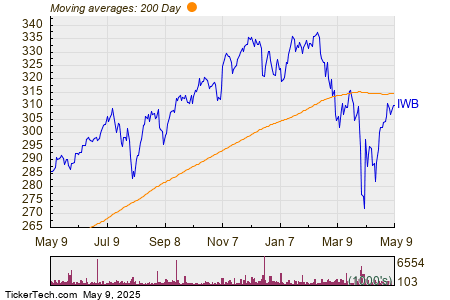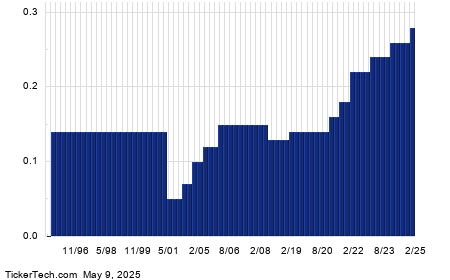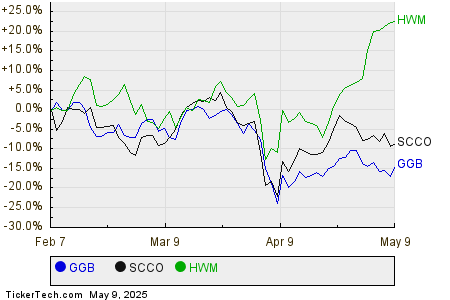Coffee Market Update: Arabica Prices Rise Amid Supply Concerns
On Thursday, May arabica coffee (KCK25) closed up +1.10 (+0.28%), while May ICE robusta coffee (RMK25) ended down -30 (-0.548%). Coffee prices showed a mixed performance, with arabica reaching a two-week high. The critical factor driving prices higher is insufficient rainfall in Brazil, which poses a threat to coffee crops. According to Somar Meteorologia, Brazil’s primary arabica coffee-growing region, Minas Gerais, received only 30.8 mm of rain during the week ending March 15, representing just 71% of the historical average. The gains for arabica coffee continued after Cooxupe, Brazil’s largest arabica coffee cooperative, warned that high temperatures and below-normal rainfall last month would likely negatively impact coffee yields this year.
Commodity Bulletin:
This free newsletter is essential for industry professionals and newcomers alike.
Conversely, robusta coffee reversed early gains to close lower on Thursday. An increase in supplies contributed to this downturn, as ICE-monitored robusta coffee inventories rose to a one-and-a-half-week high of 4,336 lots on Wednesday. Meanwhile, arabica coffee inventories monitored by ICE fell to a one-month low of 782,489 bags.
Concerns about supply continue to support coffee prices. Cecafe reported a 12% year-over-year decline in Brazil’s green coffee exports for February, totaling 3 million bags. Additionally, on January 28, Conab, Brazil’s government crop forecasting agency, projected a 4.4% year-over-year decrease in Brazil’s coffee crop for 2025/26, anticipating a three-year low of 51.81 million bags. Furthermore, Conab revised its 2024 coffee crop estimate down by 1.1%, adjusting it to 54.2 million bags from the previous forecast of 54.8 million bags.
On a bearish note, Marex Solutions indicated on March 7 that the global coffee surplus for the 2025/26 season could widen to 1.2 million bags, up from a surplus of 200,000 bags expected in the 2024/25 season.
A contributing negative factor for robusta coffee was the report from Vietnam’s General Statistics Office, which revealed that coffee exports for February rose by 6.6% year-over-year to 169,000 MT. Vietnam holds the title of the world’s leading producer of robusta coffee beans.
The long-term effects of last year’s dry El Nino weather pattern may inflict further damage on coffee crops in South and Central America. Rainfall in Brazil has been consistently below average since April 2022, adversely affecting coffee trees during the vital flowering stage, diminishing prospects for the 2025/26 arabica coffee harvest. According to Cemaden, Brazil is experiencing the driest weather since 1981, while Colombia, the second-largest producer of arabica coffee, is gradually recovering from the El Nino-induced drought.
Robusta coffee prices are supported by declining robusta production. Due to drought conditions, Vietnam’s coffee production for the 2023/24 crop year dropped by 20% to 1.472 MMT, marking the lowest level in four years. The USDA’s Foreign Agricultural Service projected that Vietnam’s robusta output for the 2024/25 marketing year will slightly decrease to 27.9 million bags from 28 million bags in 2023/24. Additionally, the General Statistics Office of Vietnam reported a 17.1% year-over-year drop in coffee exports for 2024 to 1.35 MMT. The Vietnam Coffee and Cocoa Association also reduced its 2024/25 production estimate to 26.5 million bags from a December prediction of 28 million bags.
While global coffee exports are increasing, they have a bearish impact on prices. On February 4, Conab reported a record increase in Brazil’s 2024 coffee exports, which rose 28.8% year-over-year to 50.5 million bags. However, the ICO reported on February 6 that December’s global coffee exports fell by 12.4% year-over-year to 10.73 million bags, with October-December exports also down by 0.8% year-over-year to 32.25 million bags.
The USDA’s biannual report on December 18 provided mixed signals for coffee prices. The USDA’s Foreign Agricultural Service projected a 4.0% year-over-year increase in world coffee production for 2024/25 to 174.855 million bags, including a 1.5% rise in arabica production to 97.845 million bags and a 7.5% increase in robusta production to 77.01 million bags. However, the USDA also forecasted a 6.6% decline in ending coffee stocks to a 25-year low of 20.867 million bags from 22.347 million bags in 2023/24. Additionally, on November 22, the USDA projected Brazil’s coffee production for 2024/25 at 66.4 MMT, down from the earlier estimate of 69.9 MMT and anticipated coffee inventories at 1.2 million bags by the end of the 2024/25 season, representing a 26% year-over-year drop.
Finally, Volcafe made significant revisions to its production estimates. On December 17, it cut its 2025/26 Brazil arabica coffee estimate to 34.4 million bags, down by about 11 million bags from its September prediction, citing the severity of the extended drought observed during a recent crop tour. Volcafe also anticipates a global arabica coffee deficit of 8.5 million bags for 2025/26, which would be wider than the 5.5 million bag deficit forecast for 2024/25, marking the fifth consecutive year of deficits.
On the date of publication, Rich Asplund did not have (either directly or indirectly) positions in any of the securities mentioned in this article. All information and data in this article are solely for informational purposes. For more information, please view the Barchart Disclosure Policy here.
More news from Barchart
The views and opinions expressed herein are those of the author and do not necessarily reflect those of Nasdaq, Inc.




